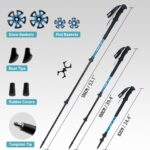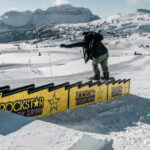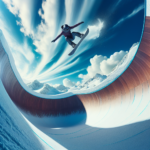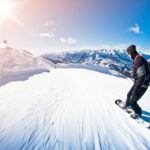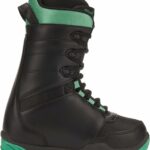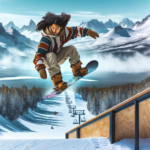You’ve got your snowboard and you’re ready to conquer the mountain, but have you ever considered trying your hand at park riding? In the heart of winter sports, park riding snowboard stands out as a thrilling and adrenaline-pumping discipline. This unique style of snowboarding integrates jumps, rails, boxes, jibs, and even half-pipes, presenting an exciting challenge for veteran boarders and novices alike. As you read further, prepare yourself for an exciting journey into the exhilarating world of park riding snowboard.
Understanding Park Riding Snowboard
Snowboarding on mountains and downhill slopes is something you might already be familiar with, however, the world of snowboarding extends much beyond. In this article we dive into the world of Park Riding Snowboard, an exhilarating and captivating branch of snowboarding.
Definition of Park Riding Snowboard
Park Riding Snowboarding, commonly just referred to as park riding, involves performing tricks and maneuvers on specially designed terrains known as terrain or snow parks. Emphasizing on the freestyle aspect, park riders utilize manmade features including rails, boxes, jumps, and half-pipes, to perform various stunts and exhibit their skill and creativity.
History and development of Park Riding Snowboard
Park Riding Snowboarding is a relatively new addition to the snowboarding scene. It originated in the late 1980s and early 1990s, during the sport’s global proliferation. Before designated parks became commonplace, snowboarders would create their own improvised parks. Over time, ski resorts recognized the demand and began creating professionally designed terrain parks, contributing to the exponential growth and popularity of park riding.
Differentiating Park Riding from other forms of Snowboarding
While traditional snowboarding is about downhill racing, slaloms or giant slaloms, park riding celebrates the freestyle aspect and creativity. The focus here is not on speed or time, but on the execution of tricks, creativity and control demonstrated by the rider.
Equipment used in Park Riding Snowboard
Park Riding, like other forms of snowboarding, requires specific equipment and gear.
Types of Snowboards for Park Riding
All-mountain snowboards, freestyle snowboards, and freeride snowboards are commonly used in park riding. Freestyle boards, however, are most commonly recommended for park riding due to their lightweight and twin tip design allowing easier execution of tricks.
Suitable clothing and protective gear
Wear waterproof and insulated clothing to keep you comfortable in snowy conditions. This includes snowboarding pants and jacket, thermal layers, socks, and gloves. Don’t forget snowboarding helmet, goggles, and most importantly—protection for your wrists, tailbone, and knees.
Choosing the right Snowboarding Boots and Bindings for Park Riding
The boots and bindings you choose should provide a good balance between comfort, fit, and responsiveness. A softer flex is generally preferred for park riding to allow a wider range of movement for tricks.
Key Skills for Park Riding Snowboard
Park riding requires a certain skill set.
The importance of balance in Park Riding
Balance is critical in park riding. Whether you’re hitting jumps, boxes, or rails, maintaining a proper body alignment will help you stay in control and land safely.
Mastering turns and rotations
Turning techniques and rotations are essential in park riding. You’ll need to learn various techniques, such as carving, skidding and sliding, and advanced moves like spin tricks.
Importance of spatial awareness and trajectory prediction
Park riding calls for excellent spatial awareness and the ability to predict your trajectory. Judging distances correctly and planning your moves in advance is key to successful park riding.
Getting Started in Park Riding Snowboard
Like any sport, starting park riding involves a learning curve.
Basic training and preparation for beginners
Before hitting the park, make sure you are comfortable on your board and have the basic skills down. A good riding level, knowledge of the park’s etiquette, and understanding the different features and terrains is a must.
Finding the right snow parks for beginners
Choose smaller, beginner-friendly parks to start with. These usually have low, wide boxes and small jump features that help you get comfortable in the park.
Tips for first-time park riders
Take it slow, start small and gradually build your skills as you gain confidence. Respect the park and other riders, always wear your protective gear, and most importantly, have fun!
Techniques and Tricks in Park Riding Snowboard
Freestyle stunts are at the heart of park riding.
Common tricks and stunts performed in Park Riding
Tricks range from basic jumps and grinds to complex and daring stunts, such as backflips, 360 spins, or slides on rails and boxes.
Steps for executing different tricks and stunts
Every trick involves a series of steps, from approach and takeoff to execution and landing. Familiarize yourself with these steps, practice regularly, and make sure you’re fully comfortable before attempting a new trick.
Risks and precautions in performing tricks and stunts in Park Riding
Being aware of the risks is important when undertaking tricks and stunts. It’s crucial to use safety gear, follow park rules, and gradually progress rather than attempting challenging features without proper training.
Park Terrain and Design
Snow parks aren’t just a blank snow canvas. They include an array of features designed for riders to perform tricks on.
Types of terrains in snow parks
Snow parks can be equipped with a variety of features, from jumps (also known as kickers), rails, boxes, to half-pipes, all with varying levels of difficulty.
Role of terrain design in Park Riding
The terrain design in a snow park plays a huge role in your park riding experience. Different features allow for different tricks and require varying skill levels.
Challenges and advantages posed by different terrains
Different terrains pose different challenges, but also offer unique advantages. Whereas rails represent a balance-challenging feature, kickers assist in aerial stunts. Being versatile and adaptable to different terrains is a vital skill in park riding.
Competition and Rules in Park Riding Snowboard
Competitions add another level of excitement to park riding.
Understanding the scoring system in Park Riding
In competitions, riders are usually scored on their tricks’ level of difficulty, execution, style, and variety. Judges also consider their use of park features.
Preparation and training for competitions
Competing involves intensive training and preparation. Regularly practicing tricks, working on your style, fitness, as well as mental readiness are crucial aspects of preparation.
Common rules and guidelines in Park Riding competitions
While rules can vary, there are some common ones. For instance, a run completed without falling usually scores higher. Safety rules are also firmly implemented in any competition.
Professionals in Park Riding Snowboard
There are professionals who have made their mark in park riding.
Profile of notable professionals in Park Riding Snowboard
Professionals like Shaun White and Mark McMorris have represented park riding at the highest level, exhibiting exceptional skills and creativity on the global stage.
Influences and contributions of professionals in the field
These professionals not only compete, but inspire and shape the sport. They are often involved in designing snow parks, mentoring younger riders, and innovating new tricks.
Steps to becoming a professional park rider
Becoming a professional park rider requires years of dedication, passion, and practice. It involves constant learning, competing, and embracing challenges to continuously improve.
Safety in Park Riding Snowboard
There’s no place for negligence when it comes to safety in park riding.
Importance of safety measures in Park Riding
Safety measures are indispensable in park riding, not only to minimize injuries but also to ensure a fun and enjoyable riding experience.
Recommendations for protecting oneself while Park Riding
Apart from using safety gear, learning how to fall correctly, respecting the park rules, staying aware of your surroundings, and respecting your skill level are essential for safety.
Managing and preventing common injuries in Park Riding
Common injuries incurred in park riding can range from sprains to fractures. Regular physical training, proper warming up and cooling down, along with using the right equipment play significant roles in preventing these injuries.
Influence of Park Riding on Snowboarding Culture
Park riding has significantly influenced the whole of snowboarding.
How Park Riding shapes the culture of snowboarding
With its emphasis on freestyle, creativity, and skill over speed and race, park riding adds a different flavor to the snowboarding culture. It transforms snowboarding into an art form, where each rider brings their unique style and creativity.
Impact of Park Riding on the snowboarding industry
The popularity of park riding has led to design improvement in equipment, proliferation of snow parks, and increased global competitions, contributing overall to the growth of the snowboarding industry.
Positive and negative influences of Park Riding on snowboarding culture
While park riding has many positives, including a stronger community, increased creativity, and promoting the active outdoor lifestyle, it is also associated with risks and injuries. However, with adequate safety measures and responsible practice, park riding can be a thrilling addition to the world of snowboarding.
That’s it! You’re ready to start or improve your park riding experience. Remember, the key is to start small, practice regularly, prioritize safety, and most importantly, enjoy the ride!
- What Snowboard Bindings Should I Get? - January 23, 2024
- What Size Screws For Snowboard Bindings? - January 23, 2024
- How To Snowmobile On Water? - January 23, 2024

